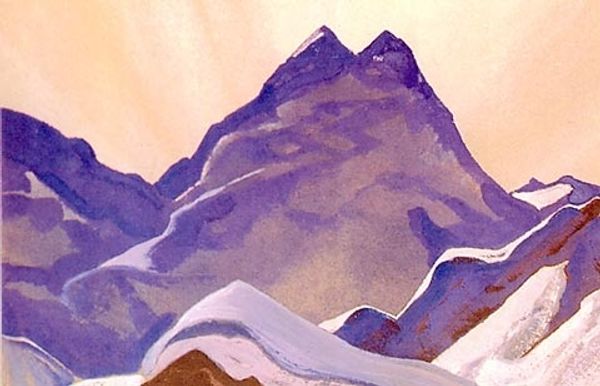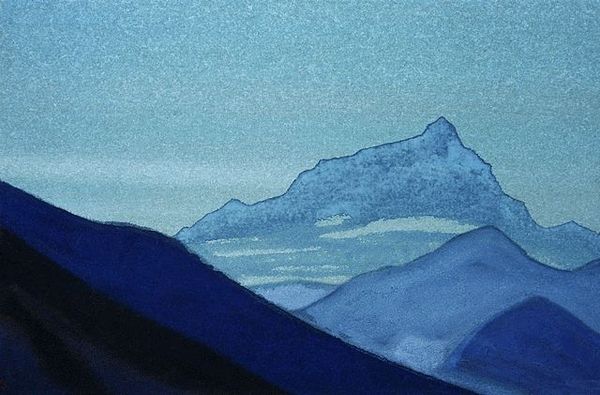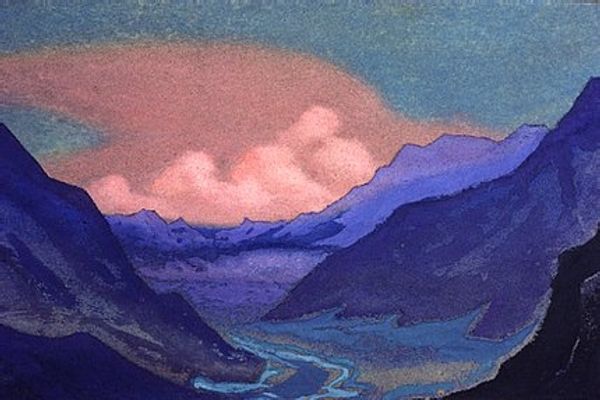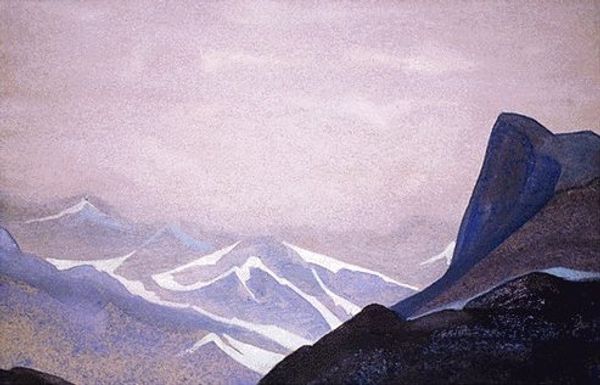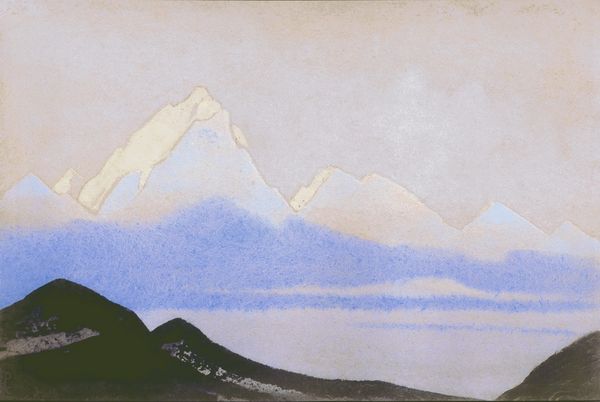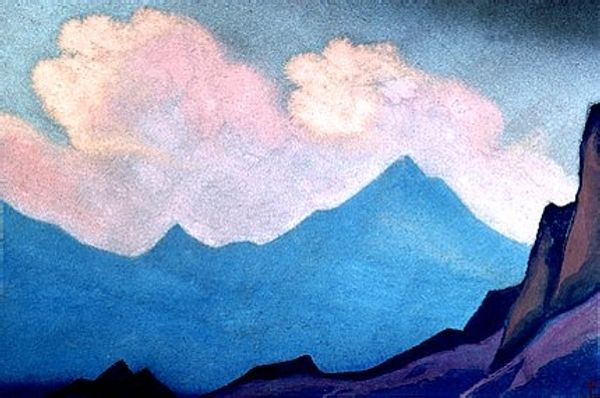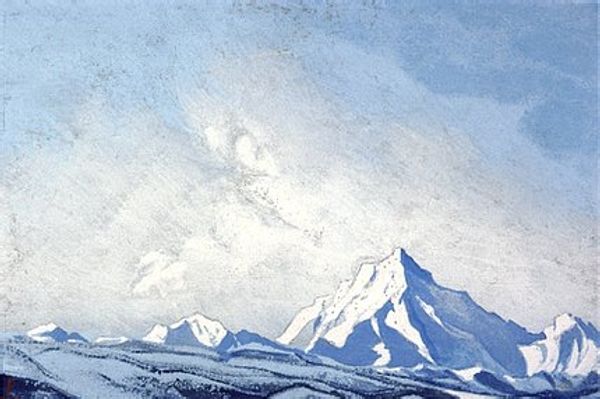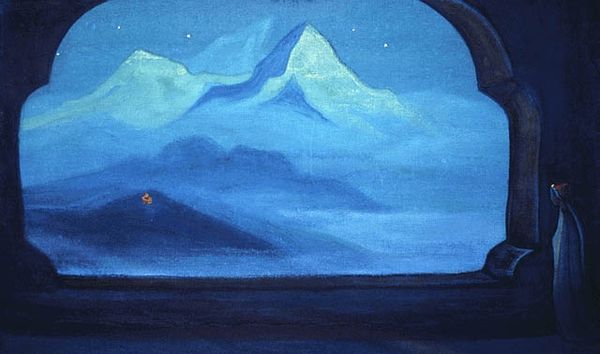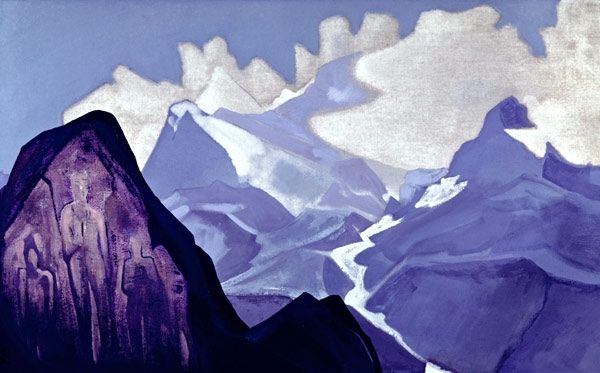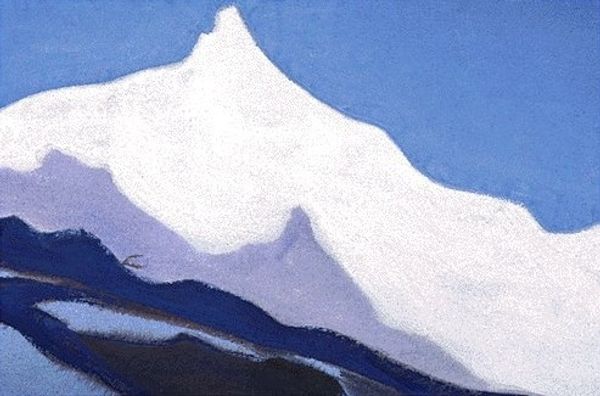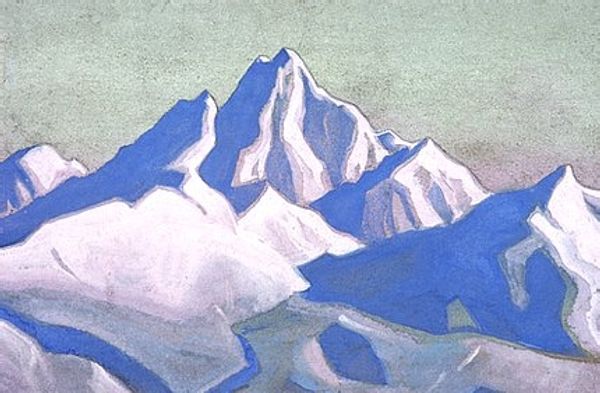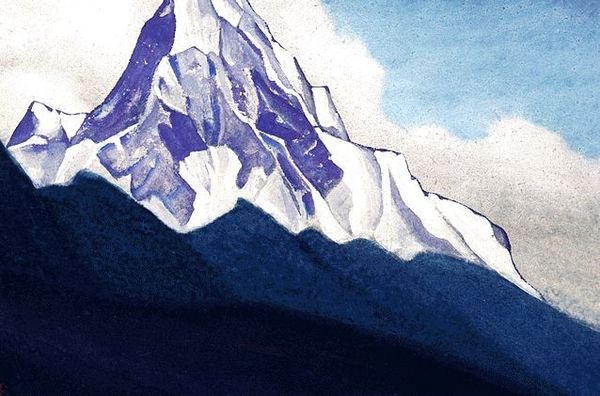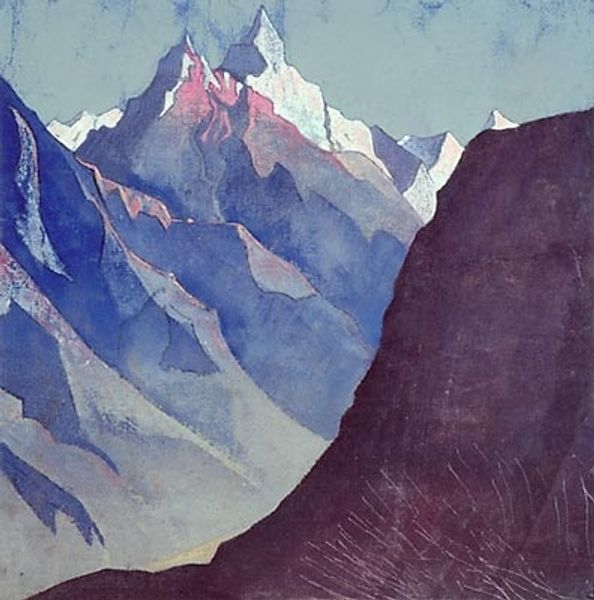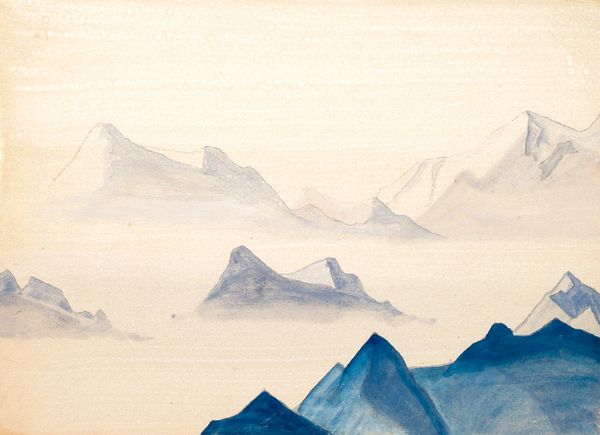
painting, watercolor
#
sky
#
painting
#
landscape
#
watercolor
#
romanticism
#
mountain
Copyright: Public domain
Editor: We’re looking at Nicholas Roerich's "Himalayas," a watercolor painting that presents a stylized mountain range under a sky filled with soft, diffused light. It feels quite spiritual and vast to me. What’s your take on it? Curator: This work exemplifies the cultural fascination with the Himalayas that permeated the late 19th and early 20th centuries. Roerich, deeply involved with the Theosophical movement, saw these mountains not merely as geographical formations but as spiritual powerhouses. Editor: How did the social context influence his artistic choices here? Curator: The rise of esoteric spiritualities significantly impacted how landscapes were depicted. Artists moved beyond representational accuracy. Notice how the mountains are simplified into almost geometric shapes and bathed in ethereal colors. It suggests a transcendence of the material world. Roerich’s paintings like these often accompanied his lectures promoting spiritual and cultural unity. Do you think it conveys this effectively? Editor: Definitely. The watercolor feels like a deliberate choice to emphasize the dreamy, almost otherworldly quality of the landscape. It's not about precision but about capturing a feeling, and perhaps promoting a specific belief system. Curator: Precisely. The 'Himalayas' becomes less a picture of mountains and more an invitation—or even a promotion—to a certain mode of seeing and experiencing the world. And, given Roerich's political activism, it represents a particular ideological position. Editor: I hadn't thought about it that way. It’s fascinating to consider the social and political layers within such a seemingly tranquil image. Curator: Indeed. Art serves a crucial role in society and reflects power and ideologies.
Comments
No comments
Be the first to comment and join the conversation on the ultimate creative platform.
